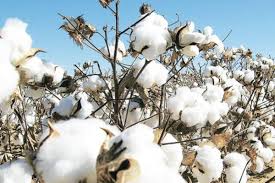Times are tough for cotton farmers and they are not expected to improve anytime soon. Jody Campiche, Vice President of Economics and Policy Analysis at the National Cotton Council, said the December ’20 contract is currently trading at a little less than 62 cents per pound.
“I think given just the amount of cotton stocks in the world and production prospects for the 2020 crop year, I don’t really see any real reason for prices to change much throughout 2020,” Campiche said. “Right now, the main factor impacting the cotton market is global mill use and global demand. For the ’19 crop year that just ended (Friday), world mill use is projected to be around 100 million bales, which is the lowest level since the 2003 crop year. That’s a significant reduction from 2018.”
As with most agricultural industries, cotton has been significantly by the ongoing coronavirus pandemic.
“Most of that is just due to a lot of the textile mills completely shut down. Of course, all of the retail clothing and textile apparel stores were closed as well. We just had a real problem getting back to where we were,” Campiche said. “As we look to 2020, we are expecting some sort of recovery. At this point, we just don’t know how much recovery due to the lingering impacts that are still going on from the COVID pandemic.”
Before the Pandemic
Before the pandemic occurred in mid-March, cotton was trading at 70 cents. According to Markets Insider, cotton prices dropped to 51 cents on March 23, about a week after the country shut down because of COVID-19. It has gradually improved but times remain tough for producers in the Southeast.
“When you look at cotton prices compared to prices of competing commodities, none of the commodities are doing real well right now. But producers of course with high investments and costs that they have to pay, a lot of times they can still produce cotton and pay their fixed costs,” Campiche said. “Now, the CFAP program did provide some support to growers for the ’19 crop year. Obviously, it wasn’t enough, and it wasn’t for all growers. It just depended on if you still had cotton, if you still owned cotton after Jan. 15. In the short term, we definitely still need more congressional support to help maintain the infrastructure. At the cotton council, we are working to get more support.”

